Antarctica
Latest
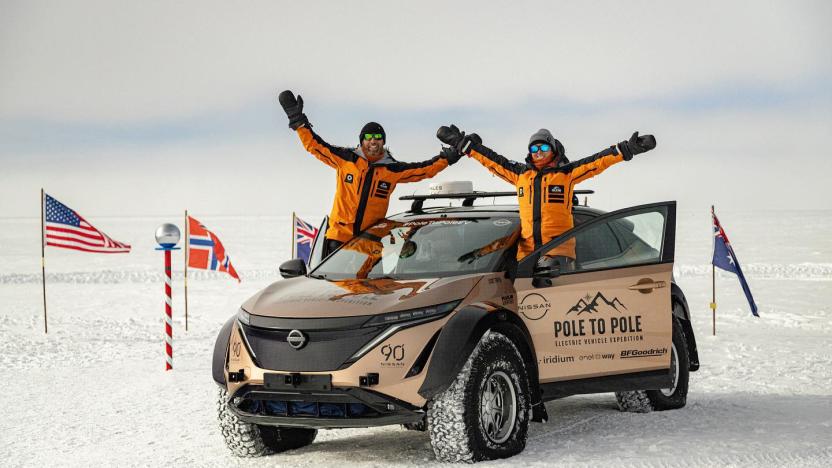
An electric car completed the world's first-ever drive from the North to the South Pole
Scottish adventurers Chris and Julie Ramsey completed their 'Pole To Pole EV' expedition with a Nissan Ariya electric car.
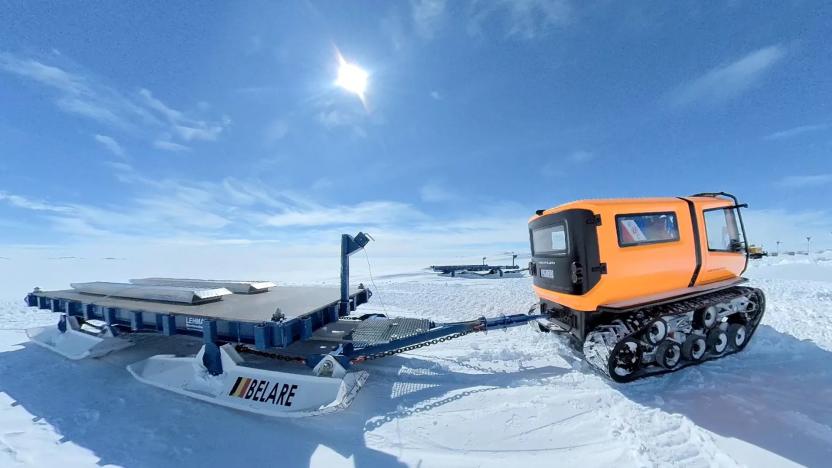
Antartica’s only EV had to be redesigned because of climate change
The only EV operating in Antarctica needed an upgrade because of climate change — it's just too warm.
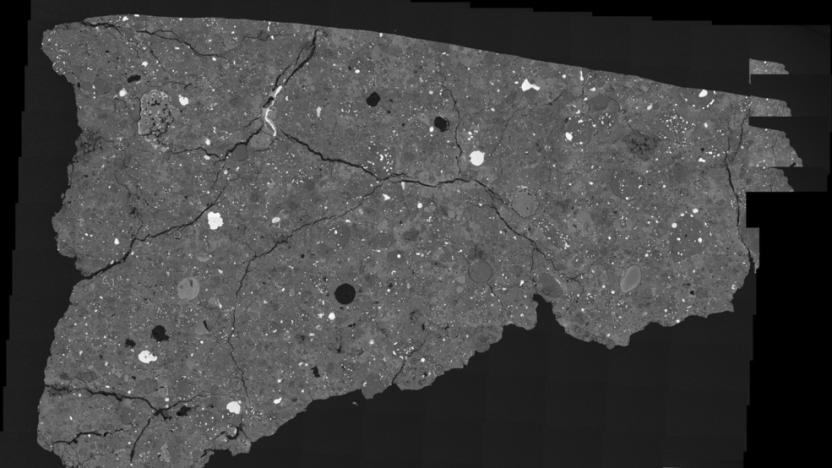
A tiny space rock holds clues about the evolution of life
NASA researchers believe meteorite Asuka 12236 holds clues about the evolution of life as we know it.
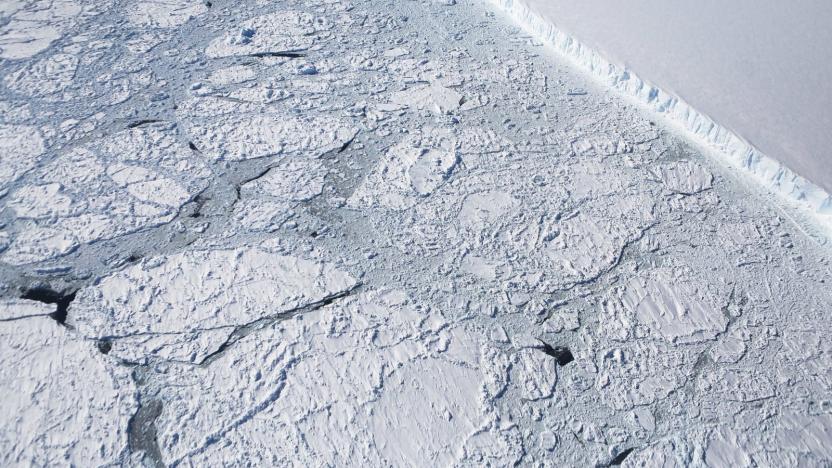
Antarctica is hotter than it's ever been
Temperatures in Antarctica have reached a record high. According to Argentinian research station thermometer, the temperature climbed to 18.3 degrees Celsius, or 64.9 degrees Fahrenheit. That beats Antarctica's previous record of 63.5 degrees, measured in March 2015, by nearly 1.5 degrees Fahrenheit.

South Pole Telescope will study 'noise' from the early universe
Scientists just got a valuable tool in their quest to understand the cosmic microwave background radiation that persists from the earliest days of the universe. The South Pole Telescope recently received an ultra-sensitive camera that will study the cosmic microwave background at an extreme level of detail. Its 16,000 detectors (ten times more than a previous experiment) can spot minuscule changes in temperature when they receive light, helping them pick up the ancient microwave energy that's virtually omnipresent in the universe but difficult to detect with conventional methods.
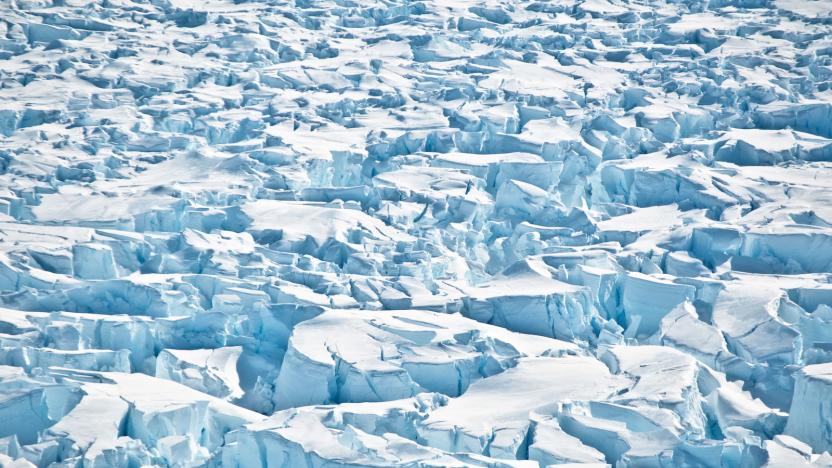
Antarctica is losing ice at an increasingly rapid rate
Antarctica is losing ice at an increasingly rapid rate, according to a new study published today in Nature. More than 80 researchers from 42 international organizations presented findings that show between 2012 and 2017, Antarctica's ice sheet lost 219 billion tons of ice per year -- triple the rate prior to 2012. Between 1992 and 2017, ice losses in the region contributed to a global sea level rise of 7.6 millimeters, with forty percent of that rise occurring in the last five years alone.

This penguin selfie is the best thing you'll see all day
Animal selfies will never not be wonderful and lucky for us all, there's another one to add to the collection. As the Washington Post reports, Eddie Gault, a researcher with the Australian Antarctic Division, put a camera on the ground near an emperor penguin colony at the Auster Rookery in Antarctica. Shortly thereafter, a couple of penguins wandered over and started checking out the camera. And since it was already recording, it captured some fantastic, up-close images of the pair. You can check out the recording below.

How NASA will defend the Earth against plagues from outer space
In the summer of 1957, the Earth stood witness as a meteorite cratered in rural Pennsylvania, bringing with it a people-eating plague never seen: an alien amoeba with the taste for human flesh. While we had Steve McQueen around for the first invasion, humanity is now defended against microbial marauders from outer space by NASA and its international counterparts.
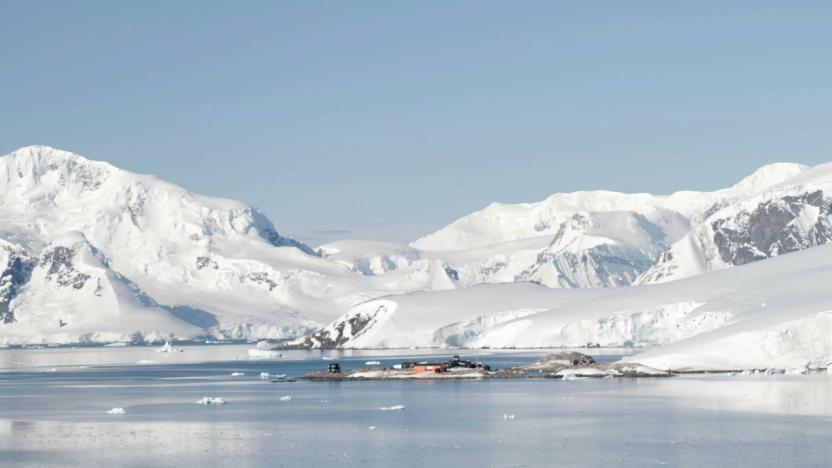
Study finds massive volcano range hidden in Antarctica's ice
A new study claims to have found a huge expanse of volcanoes lurking beneath the ice in Antarctica. Scientists unearthed a total of 91 previously undiscovered volcanoes -- some stretching up to 3,850 metres (12,600 feet) in height -- in the region known as the West Antarctic Rift System (WARS). The area is comparable to the densely concentrated volcanic regions in east Africa and North America, according to researchers from the University of Edinburgh.

Antarctica's new record high temperature is 63.5 degrees
According to the World Meteorological Organization in Geneva, the new record high temperature on continental Antarctica is a downright pleasant 63.5 degrees Fahrenheit (17.5 degrees Celsius). The measurement was recorded at the Esperanza base on March 24th, 2015 but was confirmed this week as part of the WMO's ongoing study of extreme weather and climate conditions around the world.

NASA's Antarctica balloons will study cosmic rays and neutrinos
Antarctica is ideal for launching high-altitude science balloons this time of year. You not only get non-stop sunlight (ideal for solar power), but wind patterns that keep those balloons over land. And NASA is determined to take advantage of this. It's launching a trio of Antarctic balloon missions that promise to shed light on the mysteries of space. The first to take off, the University of Maryland's BACCUS (Boron and Carbon Cosmic Rays in the Upper Stratosphere), will look at cosmic ray particles to learn about the chemicals and density in the space between stars.
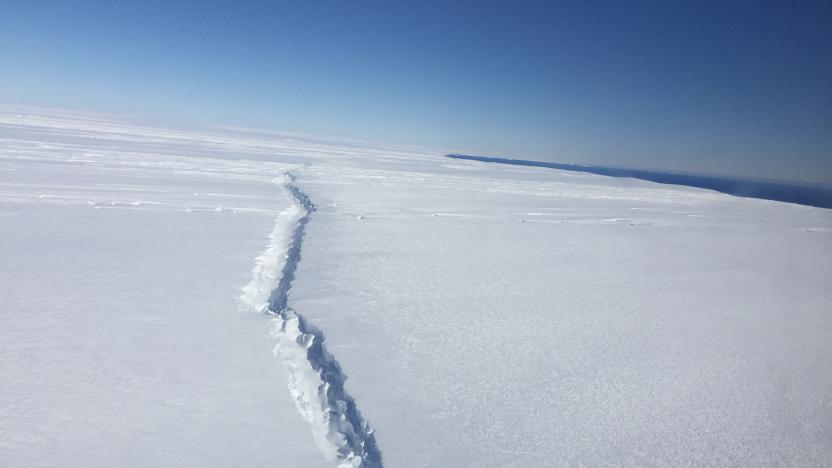
Massive Antarctica ice sheet is cracking due to warming oceans
When a giant (225 square mile) slice of Antarctica's Pine Island Glacier broke off in 2015, scientists wondered exactly what caused it. Well, they now have an explanation... and it's not very reassuring. They've determined through satellite imagery that the break started when a rift was formed at the base of the West Antarctica Ice Sheet, almost 20 miles inland, in 2013. Most likely, warming oceans intruded the sheet at the bedrock well below sea level, triggering cracks that gradually made their way upward. In other words, Antarctic ice could be much more susceptible to breaking up than it seems on the surface, and that separation may be happening faster than researchers expected.

Internet of Things could save lives during Antarctic expedition
Can the internet of things do more than just let your phone control your home's lighting and temperature? It's an idea that Sigfox is putting to the test after revealing that it's equipping an Antarctic research base with its low-power wireless network. Rather than being used to run the facilities' creature comforts, the tech will be used to connect personal GPS trackers onto the team stationed there. It's hoped that the system can be employed to prevent personnel getting separated from each other in the harsh blizzards encountered during expeditions. The only thing we're wondering is how come it's taken until 2016 before someone's been able to get a system like this working in such a dangerous environment.

Scientists reanimate tiny frozen animals after 30 years
In 1983, the first consumer mobile phones launched and "Star Wars" meant Return of the Jedi. That year, scientists from Japan's National Institute of Polar Research collected microscopic animals called "tardigrades" from Antarctic tundra. They then placed them in a freezer, where they spent the next 30 years. In 2014, researchers decided to defrost the samples to see if the tiny creatures, also called "moss piglets," would come back to life. When the thawing process completed, two creatures started wriggling immediately, setting a new deep-freeze duration record for tartigrades.

Scientists may have found Earth's largest canyon
An international team of researchers led by Durham University believe they've discovered the largest canyon on Earth. Using satellite data and ground-penetrating radar, they estimate it to be more than 100 km long and as deep as 1 km in places. They'll need to make direct measurements to confirm these findings, though that will be difficult given that the canyon is buried under several kilometers of East Antarctic ice sheet. The team suspects that the canyon was either carved out of the bedrock by water flowing under the ice or is so absurdly old that it was around before Antarctica shifted to the South Pole via tectonic forces and frozen over.

Sensor-equipped seals deliver goldmine of climate data
Seals with sensors have been roaming Antarctica's seas for over a decade and the trove of data they gathered is now available to scientists across the world. The research, conducted by an 11-nation consortium called Marine Mammals exploring the Oceans Pole-to-Pole (MEOP), was designed to see how climate change affects sensitive oceans in the region. The sensors record position, sea pressure, temperature and salinity data as the animals dive up to 60 times a day to depths of 7,000 feet. Since 2004, they've gathered more than 300,000 environmental profiles of the sea.

What to pack for a long, lonely trek across the Antarctic
Captain Robert Falcon Scott's mission to become the first to reach the South Pole famously ended in tragedy. A double tragedy, in fact, because Scott and his crew perished after finding that a rival Norwegian team had already beaten them to the punch. They died in 1912, while attempting to walk back to the Antarctic coast, having discovered nothing but a red and blue flag marking their destination. Their only consolation was that, unlike the Norwegians, they had stopped to collect valuable geological samples and other scientific information along the way. If they'd had better technology, would they have survived? For the sake of polar explorer Ben Saunders, who's currently in Antarctica re-tracing Scott's steps, we certainly hope so. Saunders and his companion Tarka L'Herpiniere are in the middle of a four-month, 1,800-mile expedition, without support by air or land, to re-trace and complete Scott's final journey. It's the first such attempt to do so, but the journey isn't about exploration this time: It's more a test of human endurance. It's also about pushing technology to its limits. Armed with a pair of Ultrabooks supplied by Intel, one of the pair's main sponsors, and a carbon-fiber sled packed with other devices, they will attempt to survive and blog about their journey. We met up with the pair before their outbound flight from the UK to find out exactly what they were taking with them.

Researchers end quest to drill through 3km of ice after fuel runs low
Sad to say, but British researchers have called off their quest to drill through the 3km-thick sheet of ice over Lake Ellsworth in Antarctica. The mission to find organisms that have evolved in isolation for at least 100,000 years was called off after the team realized it didn't have enough fuel to power its water jet drill all the way to the lake. Complications arose trying to connect the drill's main hose to a cavity of water created in the ice by a short pilot hose. The team burned through so much fuel trying to get the hose connected properly that they no longer had enough left to reach the lake below the glacier's surface. The plan has not been scrapped entirely, however. The scientists are heading back to the UK, along with all their kit, to revise their plan and modify their equipment for the next attempt. Still, it appears breaking through to Lake Ellsworth is at least three years out. For more from geoscientist and expedition member Martin Siegert, check out the source link.

Researchers to bore through 3km of Antarctic ice, seek organisms isolated for 100K years
UK researchers are ready to see if life can exist in one of the harshest environments on the planet: Lake Ellsworth in the Antarctic, 3 km (2 miles) below a glacier. They'll try to drill through the ice by December 12th using a high pressure sterile water jet heated to 90 degrees Celsius (194 Fahrenheit) and sterilize the patch of lake with intense ultraviolet light before attempting to retrieve a sample. If any organisms can be found, they'll have evolved in isolation for at least 100,000 years, according to team, and probably even much longer. That could help scientists understand more about how life evolves on this planet, and possibly elsewhere -- like iced-over oceans on Europa, Jupiter's moon, or other harsh planetary environments. It'll be the deepest borehole ever made with hot water, and the team will have a mere 24 hours to sterilize the lake entry and collect samples before it refreezes. When asked which part of the tricky experiment worried him the most, lead scientist Chris Hill replied, "everything." For a video tour of the drill site, head below the break.

Street View heads back to the Antarctic, visits historic landmarks (video)
View Larger Map Google has already taken us on a trip to the frigid shores of Antarctica before. Now the search giant is back with even more panoramic images, this time from deeper inside the frozen continent. With help from the Polar Geospatial Center at the University of Minnesota and the New Zealand Antarctic Heritage Trust (not to mention a light-weight tripod and a fisheye lens), Street View can now bring to you the wonders of our most southern land mass. This isn't a short stroll in the footsteps of penguins either -- the ceremonial South Pole and Shackleton's Hut are among the numerous landmarks that get exposed to Google's image sensors. Enjoy the quick tour above and the video after the break.









